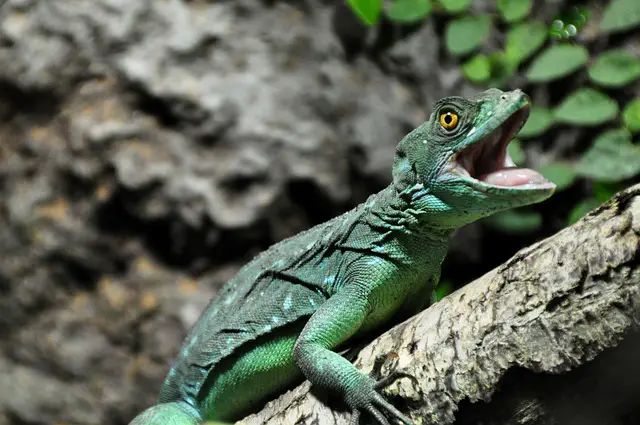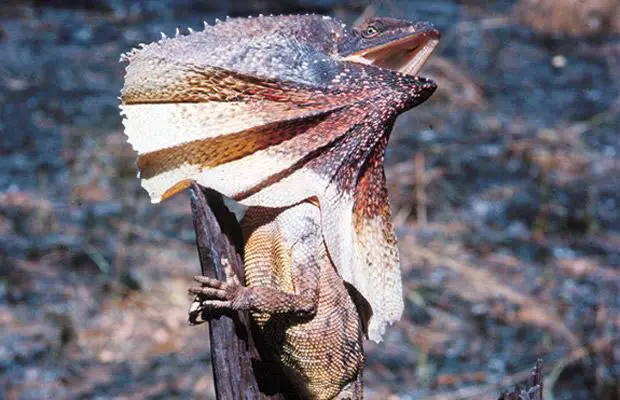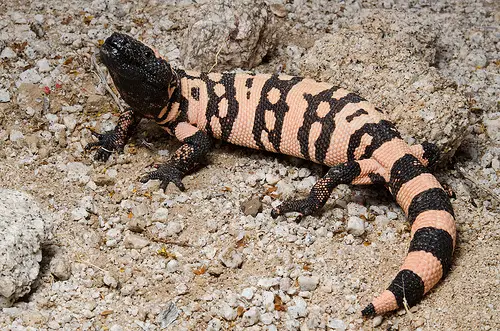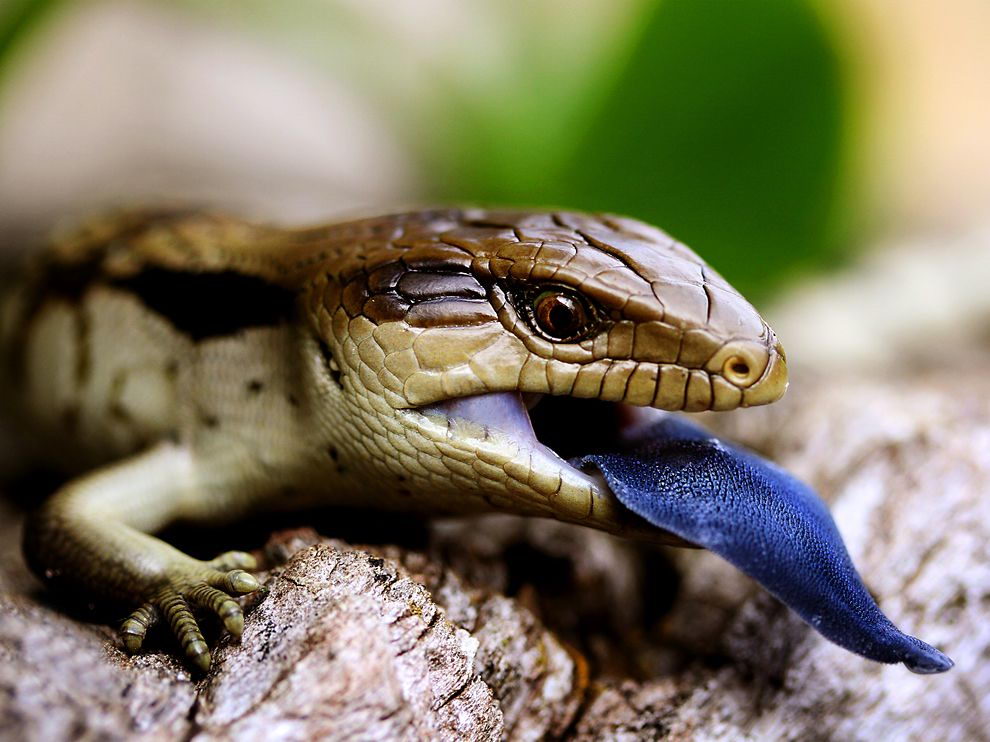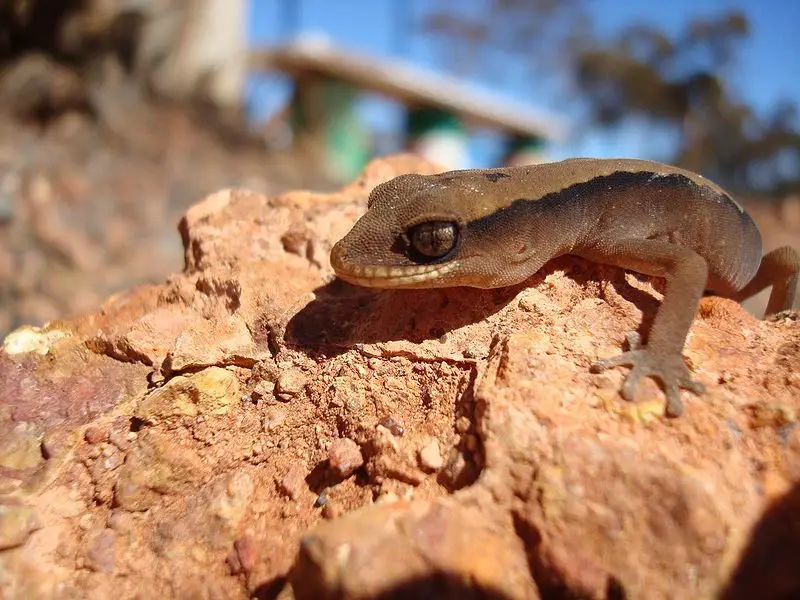Tag: Lizard
-
Basilisk Lizard Facts | Anatomy, Diet, Habitat, Behavior
The common basilisk (Basiliscus basiliscus) is one of the most familiar lizards in Central America. There is a prominent crest on its head and back that separates it from the rest of lizard species. The common basilisk is an expert climber and swimmer but it is known for running bipedally on the water surface—probably the…
Written by
-
Crested Gecko Facts | Anatomy, Diet, Habitat, Behavior
The crested gecko (correlophus ciliates) is a gecko species that is typically found in the rainforests of southern New Caledonia. The gecko was long thought to be extinct until in 1994 when it was rediscovered. It is closely related to gargoyle gecko. Like many other lizards the crested gecko is also nocturnal. They live into…
Written by
-
Frilled Neck Lizard Facts | Anatomy, Diet, Habitat, Behavior
The frilled neck lizard (Chlamydosaurus kingii) is a large lizard that seems quite threatening when it expands the frill like some dinosaurs used to do. The lizard has evolved to scare off predators in this unique fashion. Yet another unique feature about this lizard is that it is capable to run extremely fast on its…
Written by
-
Texas Horned Lizard Facts | Anatomy, Diet, Habitat, Behavior
The Texas horned lizard (Phrynosoma cornutum) is a North American lizard with a spiky body. It is found in the southeastern Arizona, Kansas, Colorado to as far south as northern Mexico. The horned lizard is also called horned toad. It can disappear its body into the dry vegetation as the body provides an excellent camouflage…
Written by
-
Blue Tongue Skink Facts | Anatomy, Diet, Habitat, Range
Blue tongue skinks are typically found all throughout the Australia. It belongs to the genus Tiliqua which contains the largest of the skink family. Blue tongue skinks make very popular pets but they are highly sensitive to certain things such as temperature, food, and location. They are mainly distinguished by their blue tongue. Blue Tongue…
Written by
-
Gila Monster Facts | Anatomy, Diet, Habitat, Reproduction
The Gila monster (Heloderma suspectum) is a bulky slow-moving lizard of the southwestern United States and northwestern Mexico. It is a venomous lizard species that has inspired wildlife-lovers for centuries. Gila monster is the larget lizard of the United States. Although people have heard much of Gila monsters yet only a few are lucky enough…
Written by
-
Leopard Gecko Facts | Anatomy, Diet, Habitat, Behavior
The leopard gecko (Eublepharis macularius) is a lizard that is found in the dry habitats of Asia. It also makes a very good pet. The unique feature of leopard gecko is that they are able to move their eyelids—a rare feature among other geckos. Leopard Gecko Facts Anatomy The adult geckos reach a length of…
Written by
-
What Do Blue Tongue Lizards Eat | Blue Tongue Lizard’s Diet
Blue tongue skink (Tiliqua spp.) is the most popular type of skink that is found in the warmer climates including woodlands and deserts. The lizard is native to Australia, Tasmania, and New Guinea. Blue tongue lizard ranges in size from 7 – 24 inches (18 – 61 cm). What Do Blue Tongue Lizards Eat True…
Written by
-
What Do Lizards Eat | Lizards Diet
Many lizards are insectivorous, relatively long tail, four legs, and live a fairly short life. A very limited number of lizards are herbivorous and non-insect eating carnivores; they are readily found outside South Central Texas. Humans have also realized the importance of lizards as they eat almost every insect from gardens or other human habitations.…
Written by
-
Types of Lizards in the World
Let’s discover some of the amazing types of lizards around the world. Different Types of Lizards Common Collared Lizard The common collared lizard (Crotaphytus collaris) is a North American species and it attains a length of 30 cm including tail. Its striking appearance is marked by beautiful colors wrapping around its chest and goes to…
Written by
-
Lizard Facts For Kids | Fun Facts about Lizards for Kids
Discover with me some of the least known lizard facts for kids such as lizards diet, habitat, distribution, and behavior. Lizards (Lacertilla) are the most diverse group of squamates comprising no less than 4500 species which are associated with the groups like iguanas, geckos, blind lizards, beaded lizards, chameleons, chisel-teeth lizards, anguids, and others. Lizards…
Written by

